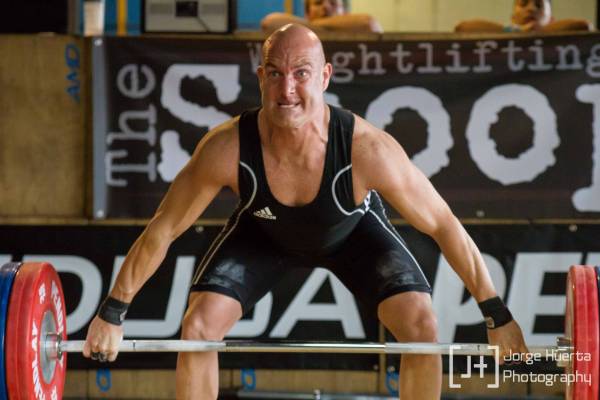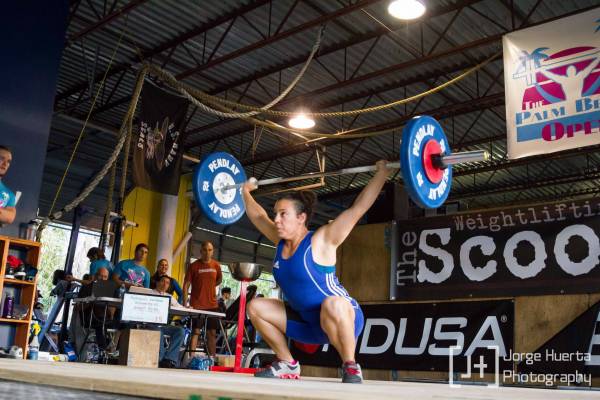It is always interesting to ask your fellow trainees why they lift weights. The answers will usually range from simply wanting to stay in shape to becoming a champion weightlifter, powerlifter, bodybuilder, or a better athlete at another sport. These are all good and noble motives, and will suffice if you just want a superficial answer. The discussion becomes more interesting when you uncover the intensity of the motivation behind the reason.
Edward W. L. Smith asked that question in his book, Not Just Pumping Iron – On the Psychology of Lifting Weights. He has uncovered four levels of intensity with regard to motivation. From lowest to highest they are:
1. I Should
Those who lift with this reasoning are merely complying with some external directive to work out because it is good for them. An example is a doctor’s suggestion to a dedicated couch potato to get in shape. Like most things that are “good for you,” there is likely to be little enthusiasm shown by the trainee. Often he or she just works out and does not train (there is a difference). There are no goals set, or any plans on how best to get there. There is compliance, but no enthusiasm.
“Like most things that are ‘good for you,’ there is likely to be little enthusiasm shown by the trainee.”
Usually this type of trainee will use any excuse to skip his or her workout that day. The rest will drag themselves to the gym. Most of these trainees eventually drift back to no training at all. They “should” lift.
2. I Have To
These people may not like lifting any better than the “I Should” crowd, but they are one step ahead just the same. What gives them their leg up? You guessed it – goals and plans. They often weight train according to the demands of their favorite sport. They hit the iron only because they know how necessary it is to keep up with their opponents. They head to the gym with little enthusiasm but with enough determination to become the best athlete they can be. That carries them through. They know for success to happen they have to get a lot stronger. They “have to” lift.
3. I Want To
Those individuals who have reached this stage have undergone a significant metamorphosis. Lifting feels physically and mentally good. The strain of effort, the pump of the engorged muscles, the rush of endorphins, the lactic acid stiffness, and the sleep-inducing fatigue after a good workout are now welcomed. The lifter also feels the elation of breaking a personal best with the knowledge that they are stronger today than yesterday, and will be even stronger tomorrow. These feelings become the siren call back to the gym for such trainees. They now “want to” lift.
“The strain of effort, the pump of the engorged muscles, the rush of endorphins, the lactic acid stiffness, and the sleep-inducing fatigue after a good workout are now welcomed.”
That is where it ends with many trainees. They become competitive lifters or elite athletes, earn their kudos, are satisfied (or not), and eventually retire. Even the “”I want to” lifters may decide to end their training once their goals have been accomplished. Often you never hear from them again, until one day you run into one of them on the street. They no longer look like the athletes they once were. They have moved on. And for them, that might have been the best choice. Others though, do not go so gently into that good night.

4. My Path
Finally, there are those who see lifting as their pathway in life. Lifting is their means to a higher end besides the familiar “I wanna get big” or “I want to keep in shape.” They get to know their sport and become students of it for the rest of their lives. Some may turn to coaching, officiating, or administration. But most importantly, they lift in order to know themselves better.
“The weights are no longer the opposition. They are old and true friends.”
As you might guess, these trainees never seem to retire. They may have to call an end to serious competition due to family and professional commitments. But you still see them going to the gym, following their path, and discovering how their body and mind react to the stresses of training. The weights are no longer the opposition. They are old and true friends. Each training session is a renewal of acquaintances, in the same way that old high school friendships are renewed decades after last seeing one another.
In short, those who have taken weight training as their path are the training elite. They are the lucky ones who never quite grow old as long as they can feel that knurling. My fellow Pulse Beat Fit writers Terry Hadlow and Bob Takano are two of the best examples.
Find Your Path
As you proceed along your chosen path in weightlifting you will learn there are many mental attributes to discover about yourself. Perhaps the main one is finding out your relationship to success. Put another way, how hard are you willing to work in order to accomplish goals? In weightlifting, you have to learn to overcome your fear of the barbell and the discomfort of heavy training.
United States Olympian Fred Lowe once told me that weightlifters can lift a lot of weight because they are willing to train beyond the comfort level of the average person. That pretty much sums up success in our sport. We all have a different comfort level or point where we decide we cannot continue this activity at a higher level. With elite lifters that level is quite high. Conversely, lower-level lifters peak at lower levels of discomfort.
“You need to take an honest look at what kind of trainee you are. Do you train because you have to, because you want to, because you like to, or because you have found your one true path to self-development?”
How a lifter comes to terms with that peak-out level is a mark of his or her degree of maturity. This maturity does not depend on how high your lifts are, but how well you can live with your own level of motivation. Not all of us can be champions, but we can all find something of value in the practice of lifting weights. You can see how your efforts have been rewarded over time. This is especially true if you have planned our own training programs based on what you have learned about your sport, and more importantly yourself.

I remember my early training days when I was cast adrift by my first coach and told that I had to now plan my training programs. I did so, and while the results might not please me today, they certainly worked then due mostly to the novice effect. I increased my total by fifty pounds, and I was quite pleased with myself.
If I were planning a program today, I would probably not prescribe what I did then, but the important thing I took away from this was I achieved success through my own planning. This revealed my self-efficacy, and would enable me to design better programs for myself in the future. That initial knowledge became the guiding light on my path’s journey.
Lifting Is a Lifelong Journey
You need to take an honest look at what kind of trainee you are. Do you train because you have to, because you want to, because you like to, or because you have found your one true path to self-development? Did I just drag myself to the gym, or was I just busting to get there? This will require some truthfulness on your part. You will have to monitor how you think about training.
The path to inner self-development never ends. Weightlifting can continue to the end of life. As for me, I will rage against the dying of the light.
(Belated apologies to Dylan Thomas.)
More Like This:
- The Science and Psychology of Motivation for Athletes
- Motivation: What Is It and How Do You Build It?
- An Analysis of Body Types in Weightlifting
- New on Pulse Beat Fit Today
References:
1. Smith, Edward W. L. Not Just Pumping Iron – On the Psychology of Lifting Weights. Springfield, IL, USA: Charles C Thomas Publisher, 1989.
Photos courtesy of Jorge Huerta Photography.






